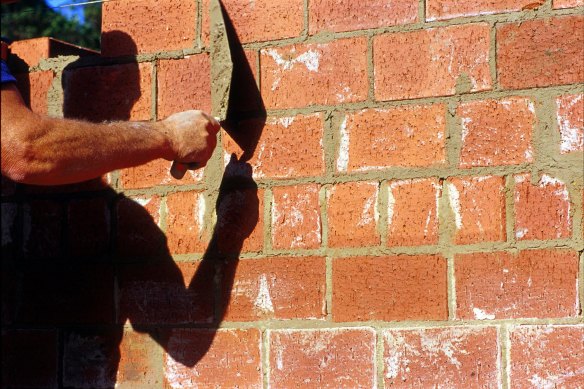By Nick Toscano
One of the nation’s largest cement groups has set new targets to decarbonise its notoriously emissions-intensive operations by 20 per cent this decade ahead of a goal of becoming carbon-neutral by 2050.
Adbri, the $1.9 billion group formerly named Adelaide Brighton, on Monday revealed its new targets aimed at reducing the amount of carbon dioxide per tonne of cement it produces by 20 per cent, reducing emissions per tonne of lime by 10 per cent and reducing or offsetting 100 per cent of emissions from its electricity consumption by 2030.

ASX-listed Adbri is Australia’s largest cement group.
It comes as heavy polluters across the world are facing a rising tide of pressure from shareholders, governments and their customers to reduce greenhouse gas emissions.
Cement, a key ingredient in concrete, contributes an estimated 8 per cent of global carbon dioxide emissions. However, the industry is considered one of the most difficult to decarbonise. Cement is primarily made of clinker, a residue produced by firing clay and limestone in kilns heated at more than 1400 degrees that are fuelled by coal or gas.
“Adbri is committed to taking action on climate change,” chief executive Nick Miller said.
“This net-zero emissions road map builds on our strong decarbonisation progress to date and establishes clear targets and actions we will advance as we strive to achieve net zero emissions by 2050.”
As part of its initiatives, Adbri will target process and efficiency improvements and continue working on ways to reduce its reliance on fossil fuels. Miller pointed out that Adbri was presently the only producer of domestic clinker and cement that did not use coal.
“We are 100 per cent on a mixture of refuse-derived fuel and gas,” he said.
“We started using refuse-derived fuel – effectively waste that’s been processed typically from building sites – and last year 35 per cent of our fuel for our kiln at Birkenhead was refused-derived fuel, and by 2022 we are targeting 40 per cent and by 2024, 50 per cent.”
Adbri had previously said it would stop using coal at its Munster plant in Western Australia, where it produces lime, by 2021, but it has pushed the deadline out to 2024.
“We acknowledge that we have made a previous commitment to phase out coal at Munster by 2021, which we have not met,” the company said in its emissions road map on Monday.
“As part of our actions to reduce emissions from lime production, we will stop using coal by the end of calendar year 2024”.
The usage of coal at Munster had declined year-on-year, making up 50 per cent of the planet’s fuel mix last year, the company added.
Investors have been engaged with Adbri through the Climate Action 100+ initiative, which is backed by 700 global funds managing a collective $70 trillion of assets.
Laura Hillis, a representative for Climate Action 100+, said investors welcomed Adbri’s new approaches to climate change outlined on Monday.
“The new commitments represent a significant step forward in providing investors the clarity and commitments they have been calling for while recognising uncertainties in the pathway to decarbonise cement and lime,” Hillis said.
“Investors will continue to engage with the company to ensure these new commitments are met, to seek further information on the company’s post-2030 pathway and to call for additional disclosure.”
Adbri, which employs 1500 staff at 200 sites across Australia, is a major supplier of cement for the construction industry. It also produces industrial lime for the mining and resources companies that use it in their chemical processes to extract minerals.
The Market Recap newsletter is a wrap of the day’s trading. Get it each weekday afternoon.